Guided by the importance of a unique artisan product such as Ibizan honey, we visit Vicent Marí, President of the Associació d’Apicultors d’Eivissa. As soon as I enter the office room while Vicent finishes a meeting, I see numerous framed images on the walls. Pictures of honeycombs, bees, honey, working beekeepers, flowers… Vicent ends his recent interview and welcomes me. Before we go back into his office, he insists on giving me a tour of the modest place. We go to the warehouse, where he explains with passion and care how beekeepers do their work, and what sort of tools and materials they need.
Vicent Marí points out that different honey supers are available for each type of frame. If you place a honey super with half the weight, the bees will fill it sooner. Before I ask, he already has the answer to my inquiries: “when you are surrounded by 3000 bees in the middle of August in a tracksuit thick as a finger, wearing a full beekeper protective suit, elbow-length gloves and boots that go all the way up… Whenever I go, I lose about four kilograms. A free sauna. Operation Bikini (trim down for summer)”, he laughs. Hence the interest of less weighted frames.
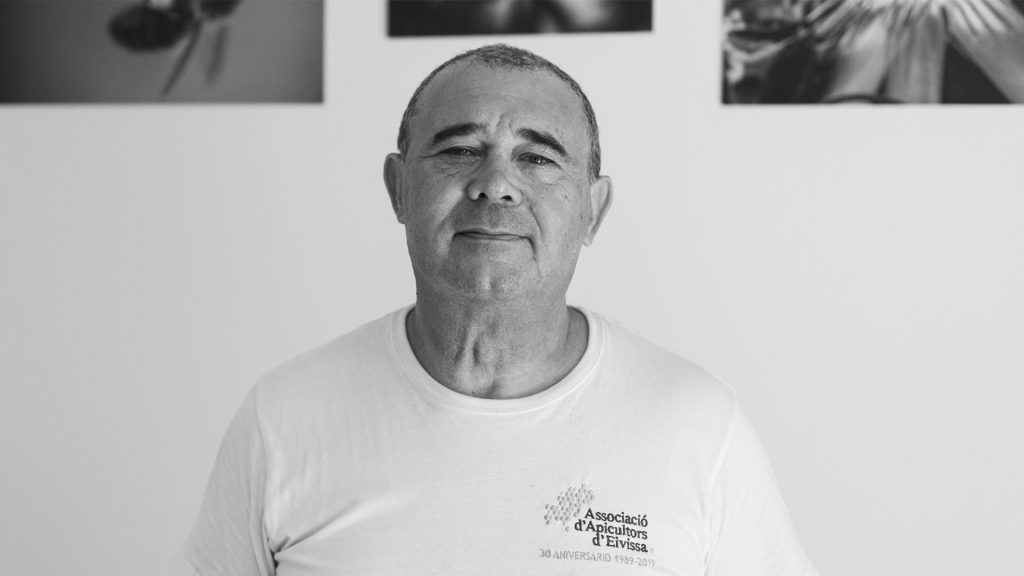
Why obtaining the IGP was critical
The small obstacle that remained for Ibizan honey so far was to recognise it as an exceptional product. To achieve this, it was mandatory to obtain the IGP, which stands for Indicación Geográfica Protegida, or protected geographical indication in English. As a metaphysical enigma, it cannot be recognized as a product without the endorsement of its existence. How can you confirm the tradition, production, trade and properties of the ancient Ibizan honey? Writing a comprehensive research paper, including analyses from 2007, 2017, 2018, 2019 and 2020, sensory analyses, a supporting report and a comprehensive socio-economic study, among many other scientific papers. Then, defending such a vast research in the Balearic Govern to dignify not only the existence of Ibiza’s honey, but its exceptional properties. Being granted the IGP makes the road map for Ibiza honey clear and promising.
The next stage seems very clear to Vicent Marí: win both a national honey contest and then jump into the international arena, since they have already won a regional competition in the Illes Balears. “Not only enter the competition, but win. I need to win,” says clearly. With his quiet and educative passion for Ibizan honey, Vicent Marí explains that winning is what changes everything: accrediting the name of honey and making it known internationally.
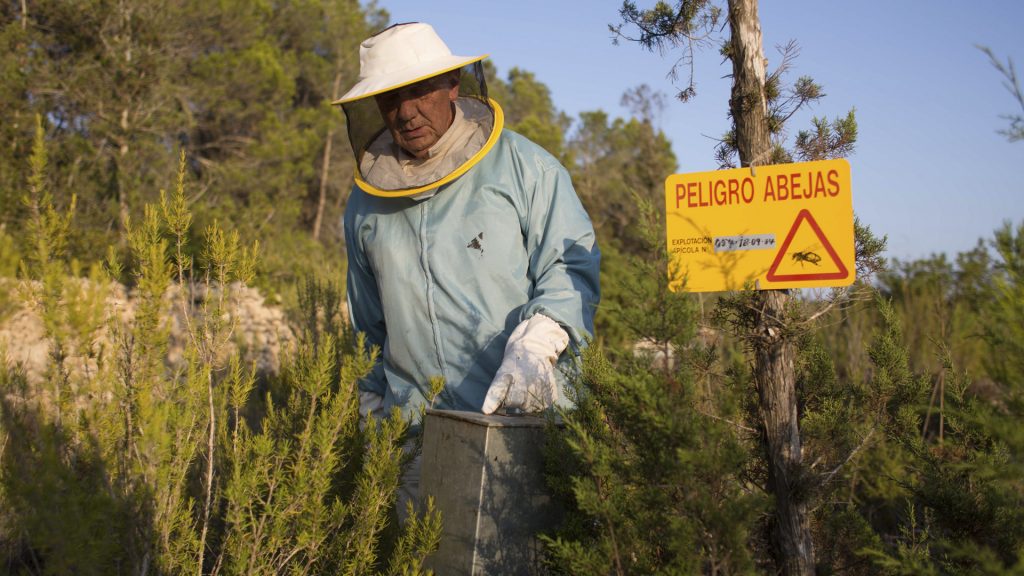
“You don’t have to enter the contest, you must win.”
It would be nice if Vicent’s passion and wisdom could be found in every sector of the food industry. He has a clear purpose: “honey exists everywhere. But a special, exceptional and unique honey like this needs to be proven”, he says. Thanks to the fact that my interlocutor is a man who combines the rigour of history with the scientific method, he made us know why Ibizan honey is unique, and why the research and the newly accredited IGP is crucial.
Ibizan honey is unique and differs from other honeys in the world. Why? Because of its blooming and pollinic porcentages. Honey from the island has the monofloral honey from Lotus, the monofloral honey of Erica multiflora (heather), and the monofloral honey of Ceratonia siliqua (carob tree). “Nowhere else do these honeys have such high percentages of pollen. They are just concentrated here in Ibiza,” Marí explains.
Traditional product by definition
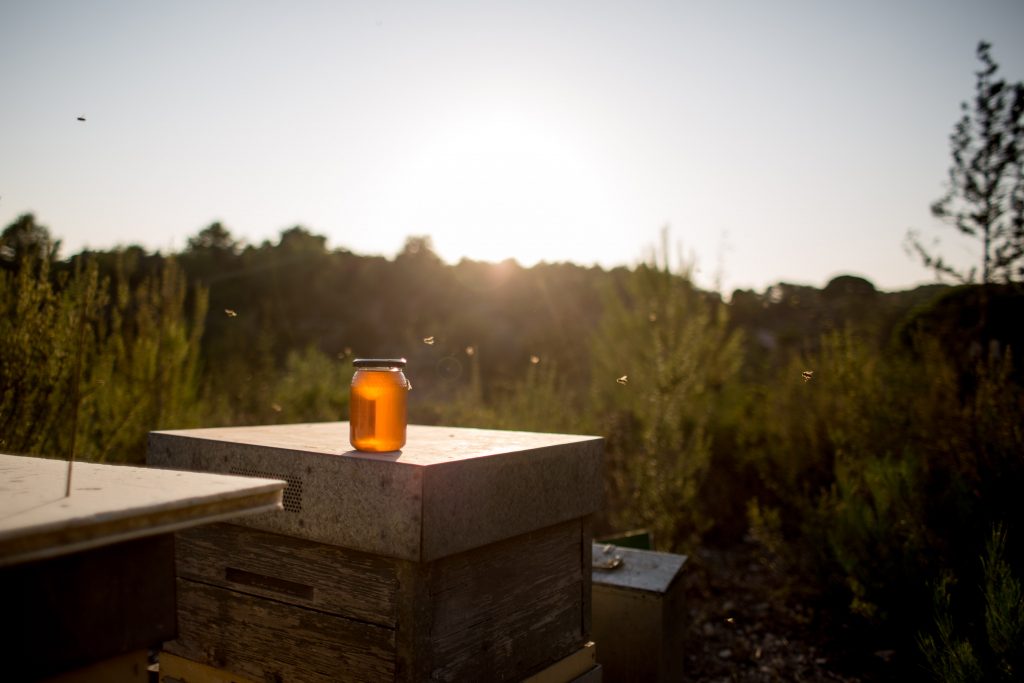
Despite the fact that the ancient settlers of Ibiza, “even as far back as the Phoenicians, already practised beekeeping on our islands, as they had done in other territories they had conquered”, Vicent Marí highlights a singular fact from the medieval period in Ibiza.
In 1320, we have evidence that Ibizan honey was already a precious and valuable product sold in the local market. Beside what we know today under the name of Vila plaza (Plaza de Vila), there was a flea market of the castle. Marketplace supervision was an important task runned by the mostassaf in Catalán. This is an interesting word found in Spanish under the name of almotacén. Both Spanish and Catalan words came from the Arabic word almuḥtasáb, derived from the classical Arabic muḥŏtasib. According to the RAE, it literally translates as “he who wins so many before God by his efforts for the community.” Therefore, this mostassaf would inspect all stalls and all products. As if it were a modern audit, he audited measures, weights, product quality, prices to avoid inflation, etc. Amongst the products, texts already highlight Ibizan honey.
To emphasize more about how old beekeeping is in Ibiza, I ask Vicent Marí about a particular framed photograph hanging before his desk. It is processed in a timeless black and white and you can see stone structures in the middle of a burnt mountain, like the ancient sculptures reaching the sky. The president of the Associació d’Apicultors d’Eivissa seems happy about the question, as he immediately explains that stone beehives like that one are disseminated throughout Ibiza, and that there is still one beekeeper in the island that keeps using this method. This caseres d’abelles (bee houses) or casats are found in “the Iberian Peninsula, though in vertical form. And we also found some horizontal structures, but embedded within a wall. Instead, we have here a completely differentiated construction”.
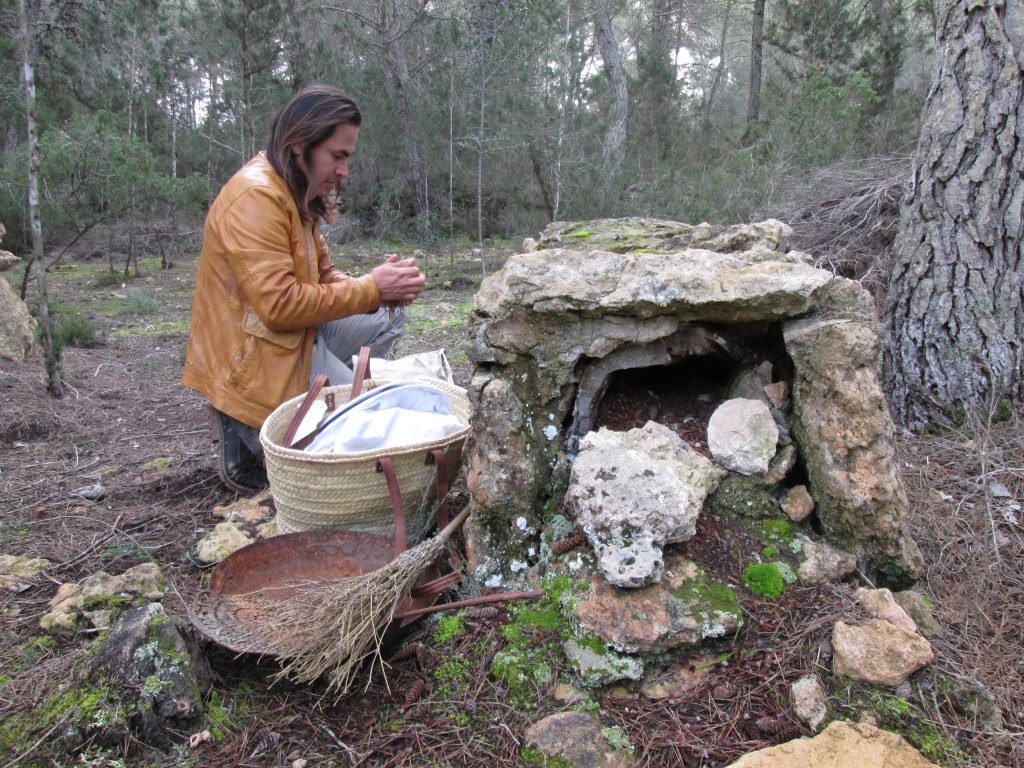
The cylinders of the casats were made of juniper and foliage. Covered in mud and placed above several stones for drainage. Two stones: one on each side, with one slab on the top, and then all that was lined inside with Posidonia. It was coated with a cylinder made of wood or stone. And it was sealed. The piece at the front was also sealed, “and through a few small holes, the bees would enter. First harvest: the first hole was discovered to initiate the recollection, and the moment you entered the nest, you stopped. You would then place it in a ceramic vessel. That was done overnight, with fire. They made smoke. Imagine the amount of bees that would come out, they would get crushed, they would stay outside…” adds Marí.
The rich citizens were a completely different story, observes Marí, because they deployed a manual press where you could add the comb and be pressed. What was left of it was handed over to the bees. Those who could not afford the luxury and technological advances of the presses, “would do so with his bare hands. It was pressed and pressed… And with the final product, they would put it somewhere else.”
Several weeks ago, we talked about the traditional architecture of Ibiza, the “casa pagesa”. The philosophy here stayed exactly the same: by necessity, beekeepers would use all available and natural materials to build their bee houses. Most of the cylinders were built out of empty carob trunks or fig trees. Once more, it was filled with leaves, mud and Posidonia. This natural resource (Posidonia) was incredibly useful because it provided insulation: during the summer it was cool, during the winter it protected from the cold.
Characterisation of Ibiza honey
Ibiza honey is collected three times a year: spring, summer and autumn, each with its unique features. During the first spring bloom, honey concentrates almond and citrus trees. The second in summer consists of frígola, the local term in eivissenc for Thymus vulgaris, thyme, combined with other local herbs. Finally, in autumn, there is a very specific flowering that creates the most unique honey in the world: carob and heather.
“this is bocata di cardinale… Formerly reserved to the gods and the rich… And most important, the monks.”
“Each has a viscosity, a taste, an scent and an organoleptic composition that makes it different from the others,” says Marí. “Spring honey is very light, not very viscous and has a touch of orange flower. Honey in summer is very rich in polyphenol, darker and more viscous. Lastly, autumn honey is super viscous, composed of carob tree and heather pollen. It has a very strong taste of coffee, liquorice, liquid carob and is an almost black color”.
When asked about the exceptional qualities of autumn honey, Vicent Marí points out that it is a rare product which is loved in the Nordic countries: “this is bocata di cardinale… Formerly reserved to the gods and the rich… And most important, the monks. Because they had more time to think while their bellies were full. The others had to make a living” he jokingly points out while laughing. Much of the knowledge of beekeeping and modern tools derives from the research and work of monks, like the famous Lorenzo Langstroth or Émile Warré.
Industrial honey versus artisan honey
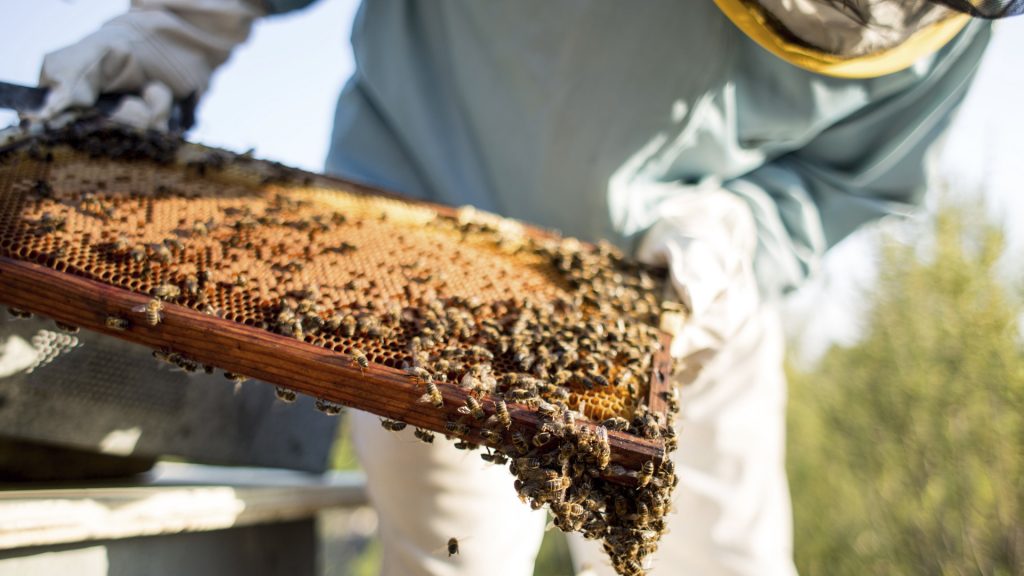
To conclude our visit to Vicent Marí, it is necessary to distinguish between industrial honey available in any shop and Ibizan artisan honey. This translates into a huge variation in price, but also in the healthy and organoleptic properties of natural honey. “Ibizan honey is made in an artisanal way”, describes Marí, “it is not pasteurized and it is never subjected to a microfiltration process that diminishes its organoleptic properties.” On the other hand, industrial honey is treated by a microfiltration that separates all the pollen and general elements that are natural elements of the honey. Hence its strong sweetness and why it never crystallizes, after being submitted to a considerable heating process. “This honey wipes out 75-80% of the natural organoleptic properties of honey. Its pollen essence is erased, just like propolis,” says Marí.
A natural antibiotic and an undisputed quality that retains each of the organoleptic properties, Ibizan honey starts to be recognized as the healthy and refined product which has been produced since ancient times. Just like the bees made it, we eat it. Nothing more, nothing less.
